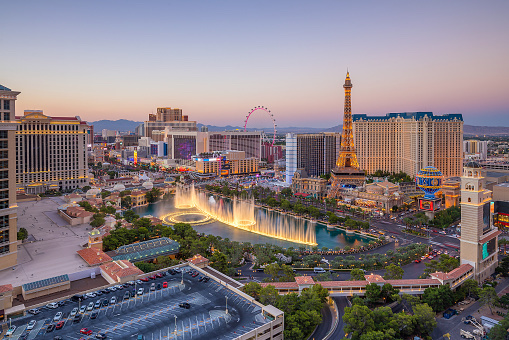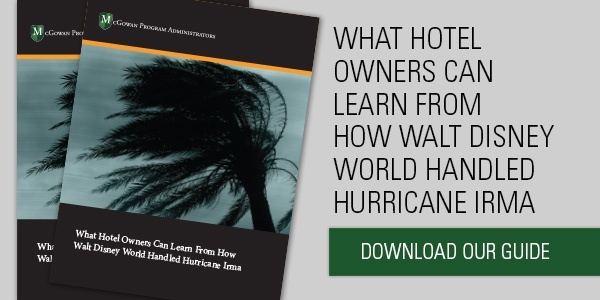Hotels, like any other locations with large numbers of people, provide an attractive target for lone-wolf attackers planning mass shootings. The massacre in Las Vegas on October 1, 2017, made the risk tragically clear.
Lawsuits against MGM, owner of the Mandalay Bay Resort and Casino, started piling up within days after a man opened fire from his suite at the resort and rained bullets on a country music festival down the street. News reports claimed the lawsuits against the hotel faced an uphill battle, but that was little comfort to hotel managers wondering what to do about the risk of such tragedies on their properties.
With mass-shooting risks, it’s helpful to think about the contrast between prevention and preparation. While preventing such attacks can be painfully difficult, planning for attacks is comparatively simple.
Hence, the best route for hoteliers is proper preparation — which could lead to prevention if the plan is well thought out and expertly implemented.
The most common risk for hotels is not the lone shooter killing dozens of people. Instead, it’s the everyday disputes among customers, employees, family members, and others that escalate into gunfire. In 2016, for instance, just five mass shootings killed more than five people, while 198 shootings killed one to five people and another 180 had no fatalities but injured at least four people.
Here’s a quick look at how hotels can confront the risks of mass shootings:
5 Keys for Hotels Preparing for Mass Shootings
1. Review your response plan
If you already have a response plan, update it to account for an active shooter, workplace violence, or an attack with a deadly weapon. Make sure your plan documents:
- Who to call when you hear gunfire or see an attack in progress. 911 is the obvious first choice, but you should also plan on who else needs to be contacted.
- The protocol defining what to do when somebody hears gunfire or witnesses a violent act.
- The method for alerting guests and deciding whether they should shelter in place or evacuate.
Be sure to walk through multiple scenarios, including the lone-wolf attacker, but also focusing on more likely threats like an employee or spouse bringing a gun to work.
2. Develop a formal emergency action plan (EAP)
A response plan lays the groundwork for a more comprehensive emergency action plan (EAP), which is a much more effective blueprint for reporting emergencies to first responders. Your EAP should include:
- Input from multiple stakeholders including your human resources and training departments, property manager, and local law enforcement/emergency responders.
- Evacuation policies and procedures, including escape route assignments, floor plans and safe areas.
- Contacts list, including their responsibilities.
- Hospitals in your region, including names, phone numbers, and distances from your location.
- An emergency notification system to alert people at remote locations within the premises, plus law enforcement and local hospitals.
3. Train your staff
Training is the linchpin of your EAP. People who’ve walked through scenarios in advance are less likely to panic and more apt to make smart decisions in a crisis. Training starts with mock shooter exercises coordinated with local law enforcement and other security experts.
Components of training should include:
- Reacting to multiple attack scenarios (gun, knife, deadly weapon, physical assault).
- Recognizing the sound of gunshots and reacting rapidly to them.
- Discussing when to evacuate, hide, or fight.
- Calling 911 and responding properly when police arrive.
- Adopting a survival mindset.
4. Prepare your property
You can’t ignore the physical dimensions of an active-shooter scenario. Make sure:
- Your property has at least two escape routes.
- Your surveillance cameras are well maintained and in good working order.
- Evacuation routes are posted conspicuously on every floor.
You can also encourage law enforcement, emergency responders, SWAT and K-9 teams, and bomb squads to train for active shooters on your property. They need the training, and they’ll be more familiar with your site if an incident occurs — which could save time and lives.
5. Develop a prevention strategy
Prevention is tough because people are so unpredictable. Still, organizations have developed best practices to stay alert for clues that often predate mass shootings and workplace violence:
- Start by fostering a respectful work place where grievances are handled fairly.
- Implement employee screenings and background checks.
- Stay alert for the warning signs like erratic behavior or shouting matches that could lead to an escalation.
- Conduct workplace-violence training.
Active-shooter scenarios rarely reflect meticulous planning that is difficult to detect. Rather, most result from simmering disputes that suddenly boil over. Addressing these more common risks provides the most potential for prevention.
The active-shooter insurance option
According to the Gun Violence Archive, mass shootings surged from 273 in 2014 to 383 in 2016 — a 40.3 percent jump in the space of 24 months. The trend continues into 2017 with 307 mass shootings in 309 days. The rising risk underscores the increasing attention on insurance policies written specifically to address the liabilities arising from active-shooter incidents.
Standard insurance policies may not cover crisis response, victim benefits such as funerals and medical bills, business income, property loss or liability in the wake of an attack. Companies that have bought terrorism insurance may not have coverage if a disgruntled worker opens fire in an office.
And then there is the question of what happens after. Many organizations affected by mass shootings are left to decide what to do with the sites. In some cases, authorities tear down the structures. In other situations, business owners reopen the doors unsuccessfully after a time and major costly renovations, seeking a sense of normalcy and a show of resolve after enduring an unimaginable horror.
These are the issues McGowan Program Administrators address in our Active Shooter/Workplace Insurance Policies. Combined with our Hotel Umbrella Insurance, these programs help hoteliers prepare for hard-to-prevent tragedies.



